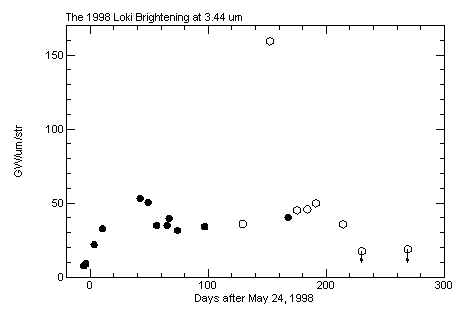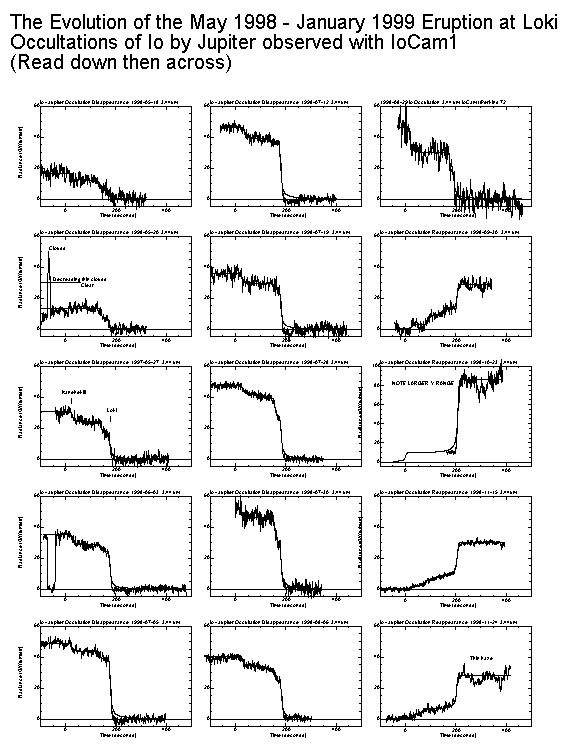
The following plot gives the 3.44 micron brightness of Loki as a function of time, as measured from occultations of Io by Jupiter. The solid circles are occultation disappearances while the open circles are occultation reappearances. The flux has been corrected to "vertical emission" assuming a cos(theta) dependence.

Based on the above measurements and using the Howell (1997) flow model the history of the eruption is as follows:
I am now completing the reduction of other wavelength data and am analyzing the multi-wavelength data set using the flow model.
The following plots are the actual occultation curves. As explained here each step corresponds to the disappearance or reappearance of a hotspot. (Halfway through the season the Io/Jupiter/Earth geometry causes a switch from disappearances to reappearances.) Loki is the major step at approximately 180 seconds which grows in late May and declines in December/January. The persistent spot at approximately 25 seconds is Kanehekili/Janus. In late July and early August another bright spot is evident with a disappearance time just before that of Loki.


Here are pdf versions of the above occultation curves at full resolution: Part 1, Part 2
The Ongoing 1999 Monitoring Campaign.